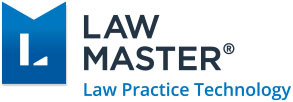What was once seen as a risky affair in business to its utilisation now demonstrating innovation and forward-thinking, it’s safe to say that the adoption of technology has vastly evolved. The 2016 Mobile Consumer Survey: The Australian Cut by Deloitte found that 84% of Australians own a smartphone, which testifies just how wholeheartedly we have embraced technology in our everyday lives. However, a survey conducted by tech powerhouse InfoTrack revealed that most Australian law firms spend less than 10% of their internal spends on technology, with 50% of respondents also stating that they won’t be increasing their tech spends in 2018 either.
Why is it we can so easily adopt new methods of communications and daily workflows in our personal lives, but the adoption of such methods are met with hesitance in the workforce?
What is cloud technology?
Cloud technology is a category of software that allows users to store and access data over the internet, instead of having to install a program on a computer’s hard drive. Regarding definition, the word ‘cloud’ is a metaphor for the internet, therefore defining the term ‘cloud technology’ as a technology that’s services are delivered to a computer (or another device) through the web.
How is it beneficial?
Using cloud technology gives you freedom and flexibility. There is no need to worry about losing a day’s worth of work, and it also allows for discordant teams to collaborate more efficiently. In addition to workflow improvements, utilising cloud technology also improves cyber security, record retention, disaster recovery and IT management.
Cyber security: Typically, cyber security attacks rely on relaxed security systems, so implementing a multi-factor authentication and encryption system in your cloud-based software means that your data is better secured and breaches are less likely to occur.
Cloud technology offers individuals and organisations the option to implement a multi-factor authentication and encryption system. This could include single-use passwords, phone-based authentication (through apps or SMS) or smartcards.
Record retention: Using cloud software is advantageous for record retention, in that it simplifies the process involved in keeping, updating and producing meaningful reports. The storing of all transactions, expenses and assets is easier as less storage space is needed. And keeping documents up to date is made simpler with automation.
Disaster recovery: Unlike hard-copy backups, the cloud can be accessed from anywhere at any time. Making use of cloud technology is a great backup plan that can withstand the forces of nature and any other unforeseen circumstances that could otherwise put a halt to traditional work methods.
IT management: Using a cloud-based system is much more cost-effective than running a business off of a hardwired system for a few reasons. Firstly, the need to purchase costly systems and equipment is abolished as everything is in the cloud. Secondly, the cost of upgrades to systems and updating hardware/software is usually included in the contract. Thirdly, the need to pay expert staff is eliminated, as cloud software usually comes with an online help team.
Exemplifying the cloud
A survey conducted by InfoTrack revealed that 87% of respondents analysed company structures by reading the ASIC extract, while 22% said they used a data visualisation tool. There’s no denying how time-consuming analysing a paper ASIC company search is. Using a data visualisation tool to run this analysis for you is a massive time-saver, and it reduces the room for human error. One example is REVEAL, a cloud-based data visualisation tool. REVEAL works by amassing many search results and instantly maps out relationships between people, companies and assets in one simple visualisation. Using this system saves time and reduces the room for error, as everything works within the one system.
Where to next?
With technology continuing to evolve and time definitely not showing any signs of slowing down, it’s essential that law firms adopt and invest in technology to simplify their workflows. Otherwise, you run the risk of falling behind; and with the easy accessibility to cloud technology adoption, there’s really no excuse!
About the author
Tory Ishigaki is a content writer and public relations expert who covers everything from legal to property topics. She is the Content Marketing Manager of InfoTrack, one of the fastest growing software companies in Australia, known for its innovative disruption and award-winning technology.












